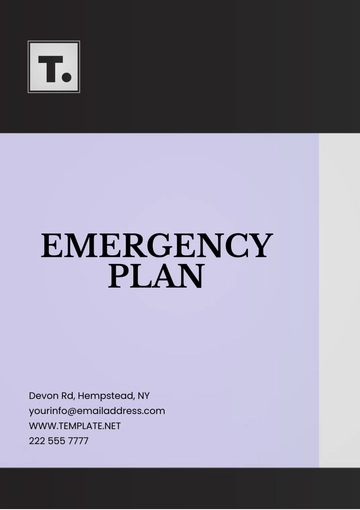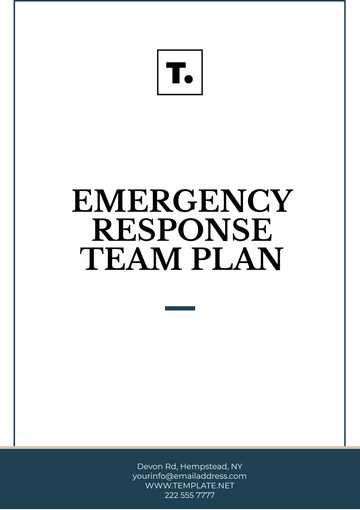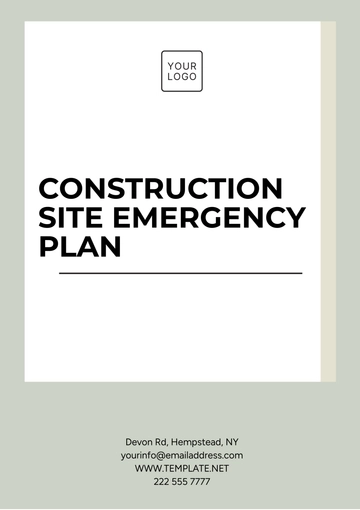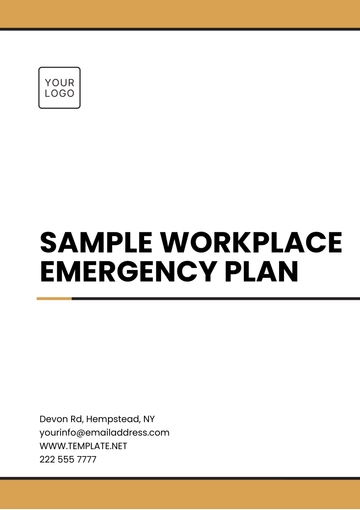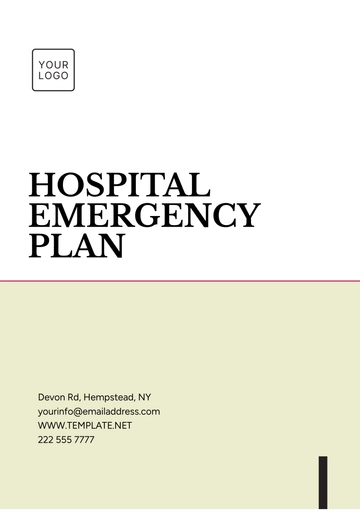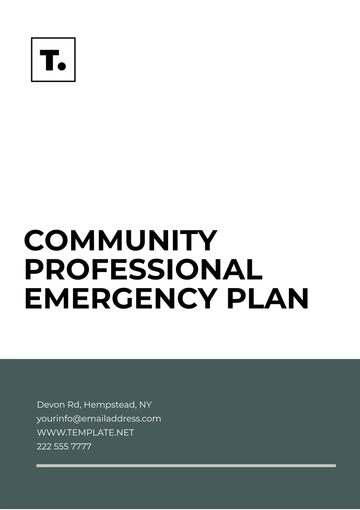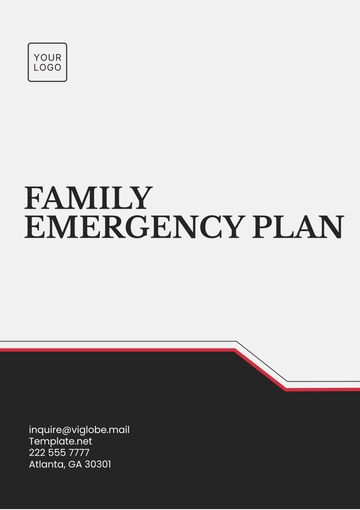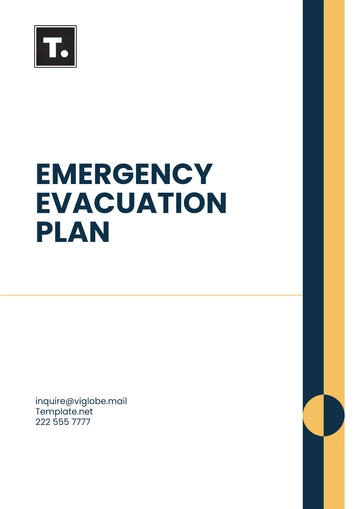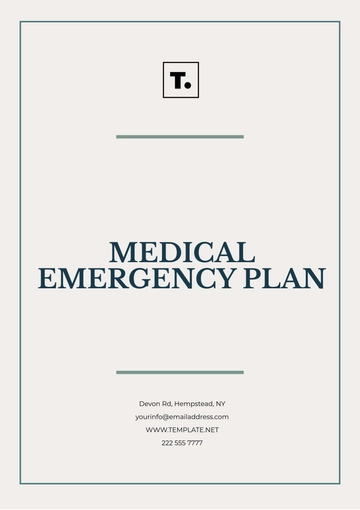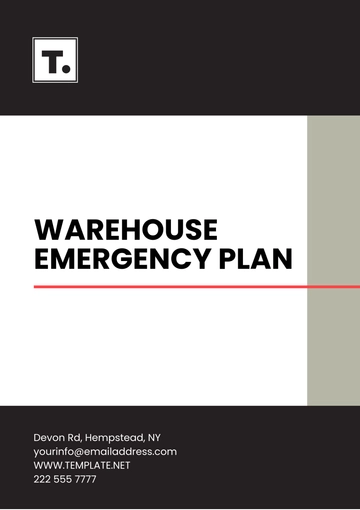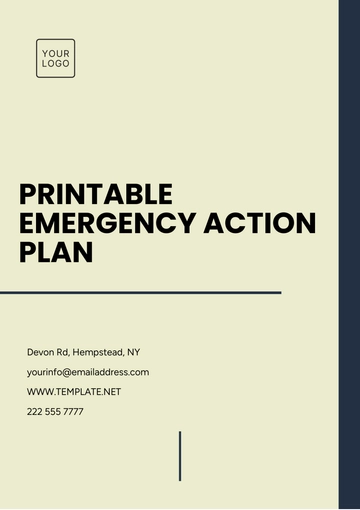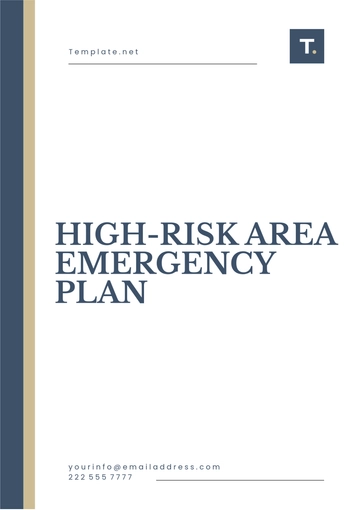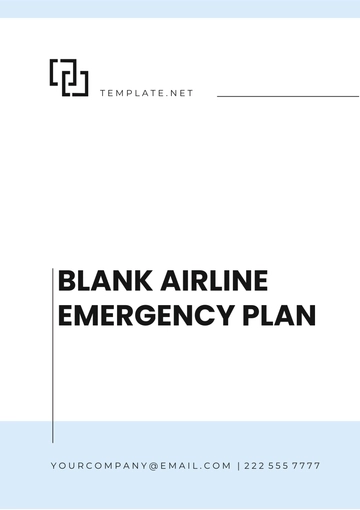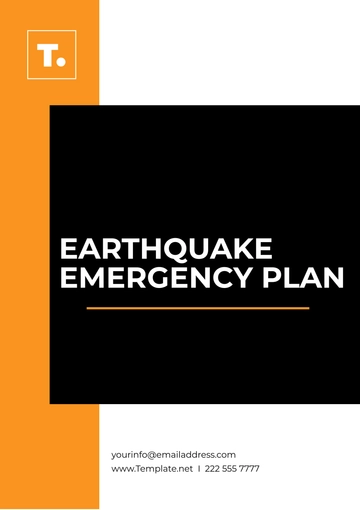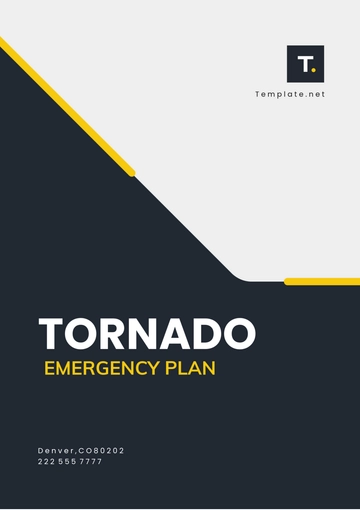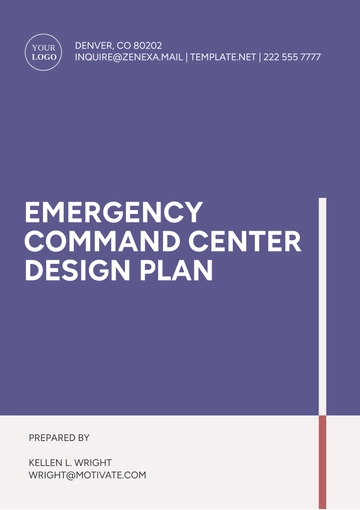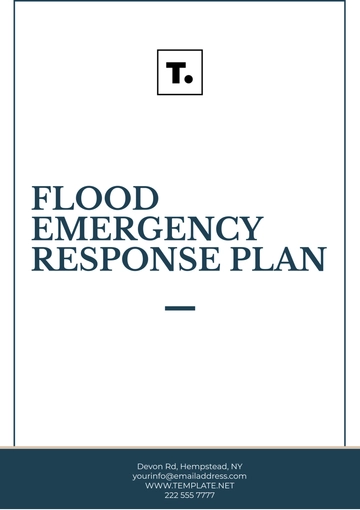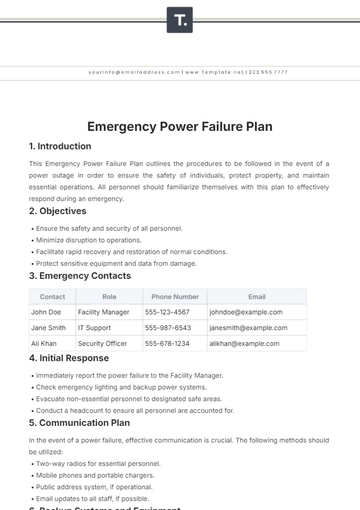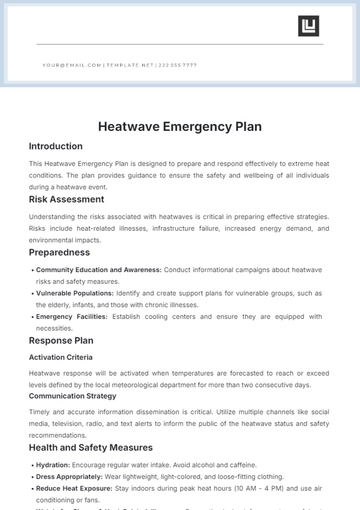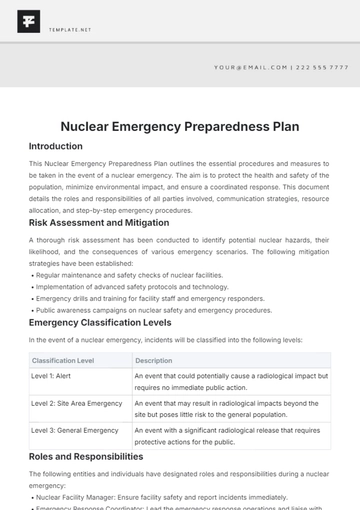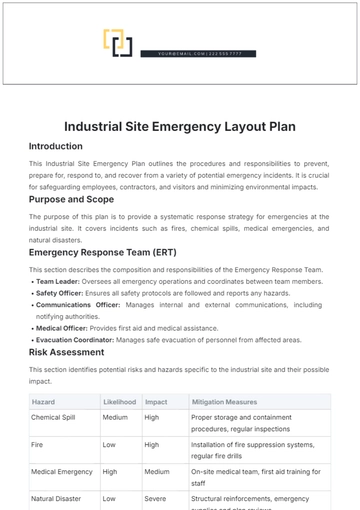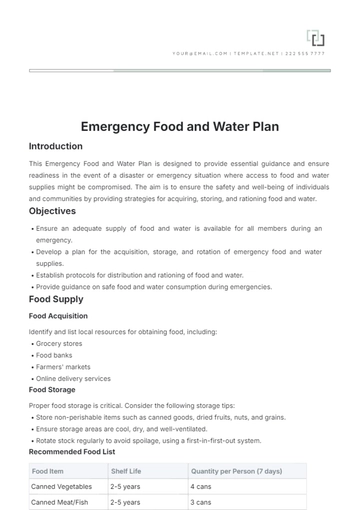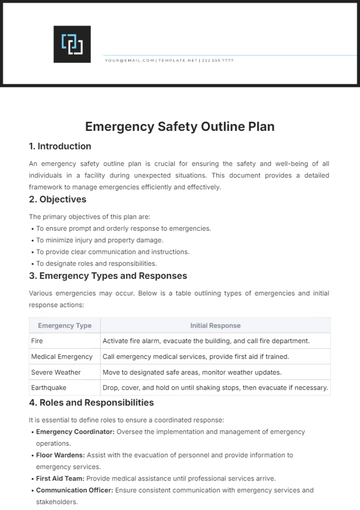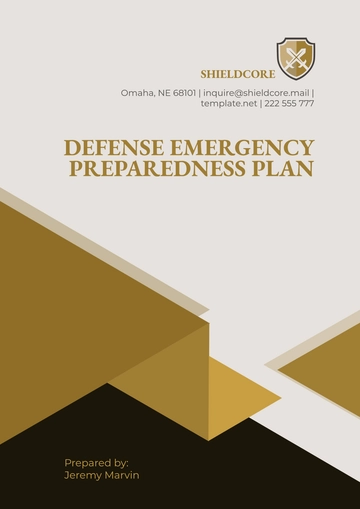Free Emergency Food and Water Plan
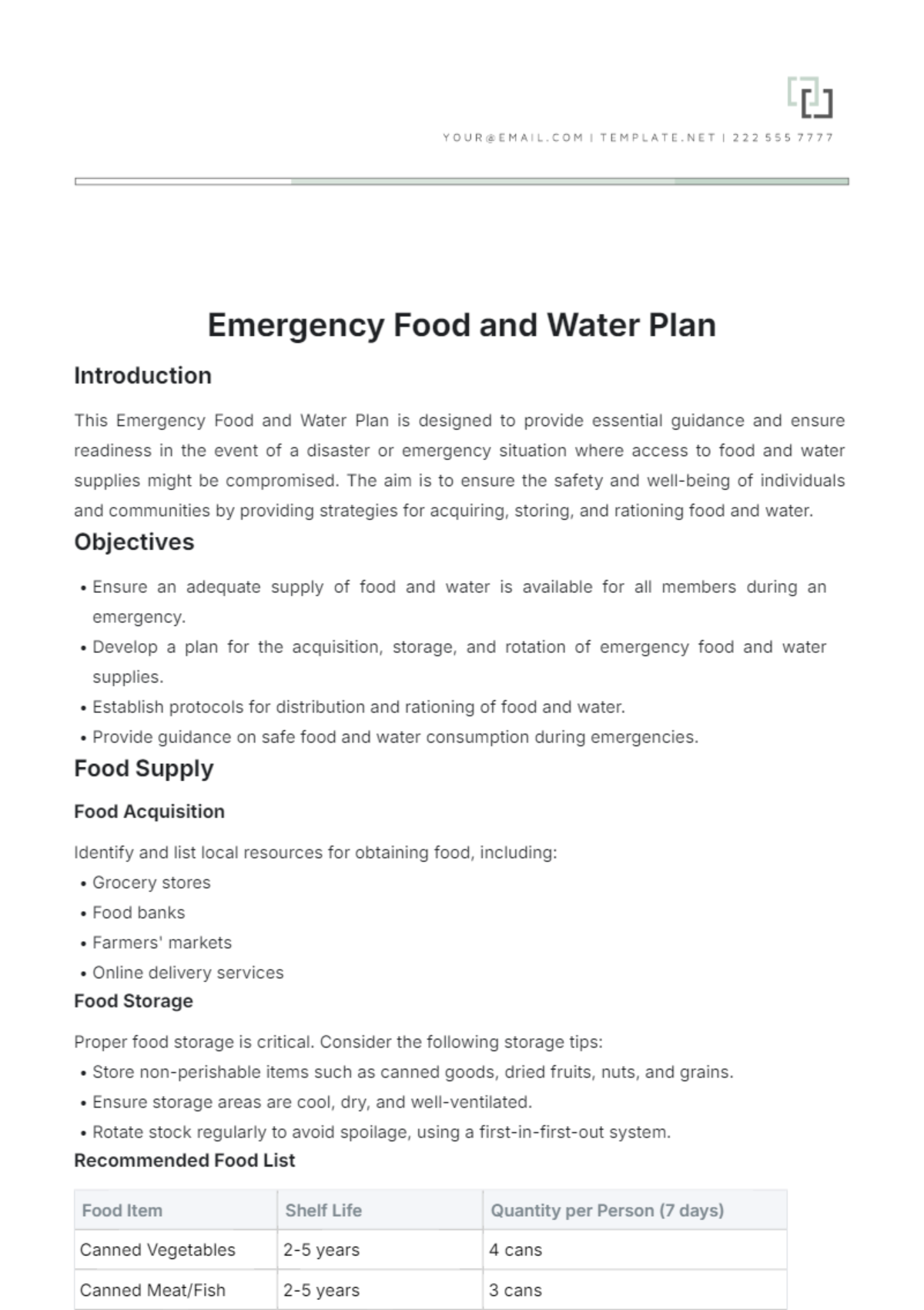
Introduction
This Emergency Food and Water Plan is designed to provide essential guidance and ensure readiness in the event of a disaster or emergency situation where access to food and water supplies might be compromised. The aim is to ensure the safety and well-being of individuals and communities by providing strategies for acquiring, storing, and rationing food and water.
Objectives
Ensure an adequate supply of food and water is available for all members during an emergency.
Develop a plan for the acquisition, storage, and rotation of emergency food and water supplies.
Establish protocols for distribution and rationing of food and water.
Provide guidance on safe food and water consumption during emergencies.
Food Supply
Food Acquisition
Identify and list local resources for obtaining food, including:
Grocery stores
Food banks
Farmers' markets
Online delivery services
Food Storage
Proper food storage is critical. Consider the following storage tips:
Store non-perishable items such as canned goods, dried fruits, nuts, and grains.
Ensure storage areas are cool, dry, and well-ventilated.
Rotate stock regularly to avoid spoilage, using a first-in-first-out system.
Recommended Food List
Food Item | Shelf Life | Quantity per Person (7 days) |
|---|---|---|
Canned Vegetables | 2-5 years | 4 cans |
Canned Meat/Fish | 2-5 years | 3 cans |
Rice | 18 months - 2 years | 2 pounds |
Pasta | 1-2 years | 2 pounds |
Dried Beans | 1-2 years | 1 pound |
Water Supply
Water Acquisition
Plan to acquire water from multiple sources:
Bottled water suppliers
Local streams or rivers (with purification methods)
Rainwater collection systems
Water Storage
For effective water storage, remember:
Store at least one gallon of water per person per day.
Use clean, sealed containers to avoid contamination.
Keep stored water in a cool, dark place away from chemicals.
Water Purification
Outline methods for purifying water in case stored water runs out:
Boiling: Boil water for at least one minute to kill pathogens.
Purification Tablets: Use tablets according to package instructions.
Filtration Systems: Use a portable water filter for natural water sources.
Emergency Rationing Guidelines
In the event of a prolonged emergency, ration food and water properly by:
Prioritize high-calorie and high-nutrient foods.
Ensure the most vulnerable individuals, such as children and the elderly, are adequately supplied.
Monitor consumption to anticipate supply needs and last as long as possible.
Communication and Review
Ensure everyone in the household or community is aware of the plan by:
Conducting regular meetings to discuss and review the plan.
Providing educational materials on food and water safety.
Identifying roles and responsibilities within the group.
Conclusion
Having a comprehensive Emergency Food and Water Plan is crucial for survival in emergency or disaster situations. Regular review and practice of the plan will ensure efficient action and minimize risks associated with food and water shortages.
- 100% Customizable, free editor
- Access 1 Million+ Templates, photo’s & graphics
- Download or share as a template
- Click and replace photos, graphics, text, backgrounds
- Resize, crop, AI write & more
- Access advanced editor
Ensure your family's safety with the Emergency Food and Water Plan Template, designed to help you prepare for any situation. This customizable and downloadable template allows you to create a comprehensive plan tailored to your needs. It's also printable and editable in our AI Editor Tool, making it easy to adjust as circumstances change. Protect your loved ones by having a reliable emergency plan, offered by Template.net.
You may also like
- Finance Plan
- Construction Plan
- Sales Plan
- Development Plan
- Career Plan
- Budget Plan
- HR Plan
- Education Plan
- Transition Plan
- Work Plan
- Training Plan
- Communication Plan
- Operation Plan
- Health And Safety Plan
- Strategy Plan
- Professional Development Plan
- Advertising Plan
- Risk Management Plan
- Restaurant Plan
- School Plan
- Nursing Home Patient Care Plan
- Nursing Care Plan
- Plan Event
- Startup Plan
- Social Media Plan
- Staffing Plan
- Annual Plan
- Content Plan
- Payment Plan
- Implementation Plan
- Hotel Plan
- Workout Plan
- Accounting Plan
- Campaign Plan
- Essay Plan
- 30 60 90 Day Plan
- Research Plan
- Recruitment Plan
- 90 Day Plan
- Quarterly Plan
- Emergency Plan
- 5 Year Plan
- Gym Plan
- Personal Plan
- IT and Software Plan
- Treatment Plan
- Real Estate Plan
- Law Firm Plan
- Healthcare Plan
- Improvement Plan
- Media Plan
- 5 Year Business Plan
- Learning Plan
- Marketing Campaign Plan
- Travel Agency Plan
- Cleaning Services Plan
- Interior Design Plan
- Performance Plan
- PR Plan
- Birth Plan
- Life Plan
- SEO Plan
- Disaster Recovery Plan
- Continuity Plan
- Launch Plan
- Legal Plan
- Behavior Plan
- Performance Improvement Plan
- Salon Plan
- Security Plan
- Security Management Plan
- Employee Development Plan
- Quality Plan
- Service Improvement Plan
- Growth Plan
- Incident Response Plan
- Basketball Plan
- Emergency Action Plan
- Product Launch Plan
- Spa Plan
- Employee Training Plan
- Data Analysis Plan
- Employee Action Plan
- Territory Plan
- Audit Plan
- Classroom Plan
- Activity Plan
- Parenting Plan
- Care Plan
- Project Execution Plan
- Exercise Plan
- Internship Plan
- Software Development Plan
- Continuous Improvement Plan
- Leave Plan
- 90 Day Sales Plan
- Advertising Agency Plan
- Employee Transition Plan
- Smart Action Plan
- Workplace Safety Plan
- Behavior Change Plan
- Contingency Plan
- Continuity of Operations Plan
- Health Plan
- Quality Control Plan
- Self Plan
- Sports Development Plan
- Change Management Plan
- Ecommerce Plan
- Personal Financial Plan
- Process Improvement Plan
- 30-60-90 Day Sales Plan
- Crisis Management Plan
- Engagement Plan
- Execution Plan
- Pandemic Plan
- Quality Assurance Plan
- Service Continuity Plan
- Agile Project Plan
- Fundraising Plan
- Job Transition Plan
- Asset Maintenance Plan
- Maintenance Plan
- Software Test Plan
- Staff Training and Development Plan
- 3 Year Plan
- Brand Activation Plan
- Release Plan
- Resource Plan
- Risk Mitigation Plan
- Teacher Plan
- 30 60 90 Day Plan for New Manager
- Food Safety Plan
- Food Truck Plan
- Hiring Plan
- Quality Management Plan
- Wellness Plan
- Behavior Intervention Plan
- Bonus Plan
- Investment Plan
- Maternity Leave Plan
- Pandemic Response Plan
- Succession Planning
- Coaching Plan
- Configuration Management Plan
- Remote Work Plan
- Self Care Plan
- Teaching Plan
- 100-Day Plan
- HACCP Plan
- Student Plan
- Sustainability Plan
- 30 60 90 Day Plan for Interview
- Access Plan
- Site Specific Safety Plan
